Shooting with macro lenses can open up a whole new world of photographic possibilities, providing a way in to the magical and creative realm of photography in miniature.
But with so many options available from Nikon alone, and many equally tempting alternatives on offer from competitor brands, choosing the best macro lens for your Nikon FX camera can seem like a daunting task.
Fear not, as in this guide I’ll round up 8 of the best macro lenses currently on the market for the Nikon FX system, before going on to explain what features you should be looking out for when choosing a macro lens.
Tamron’s 90mm f/2.8 Di VC USD is a fantastic quality macro lens offering exceptional clarity and detail in 1:1 close up.
The lens is sharp from edge to edge, even when used wide open, and the level of crispness continues all the way through to around f/11 – beyond which there’s an acceptable drop-off in definition.
The lens does display some purple fringing and slight vignetting, however both issues are easily corrected at the post-production stage. Bokeh, meanwhile, is very attractive indeed.
Pros
- Good optics
- Fairly priced
- Weather sealed
- Sturdily built
- Image stabilization
Cons
- Some color fringing
- AF motor noise
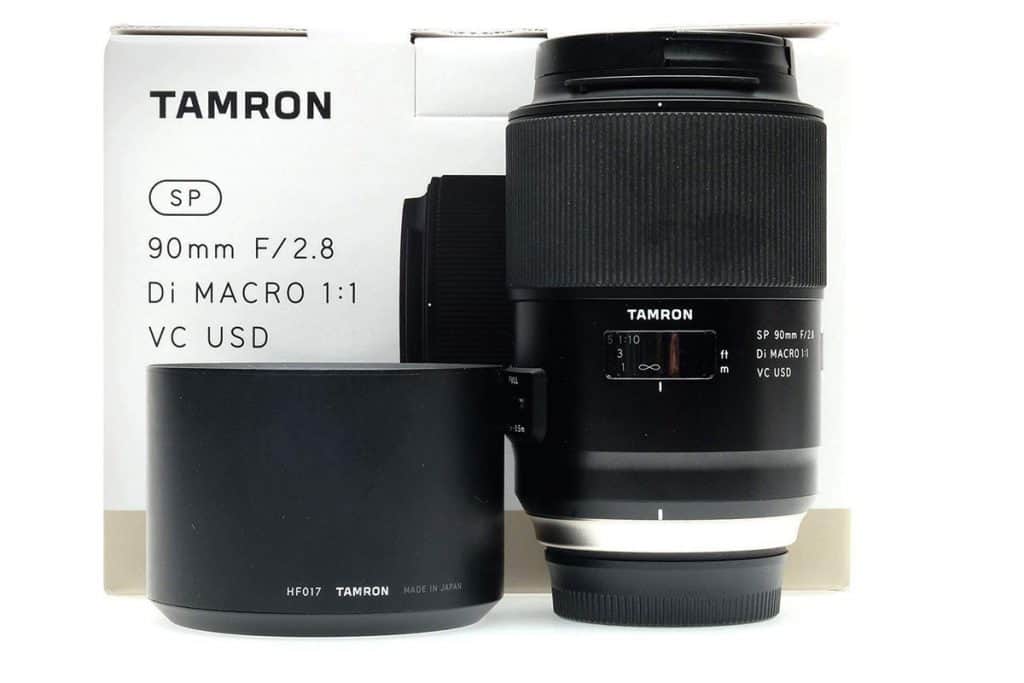
- Shot with this lens
The 90mm’s image stabilization works extremely well, even when used very close up.
And autofocus, too, performs excellently overall. However, on the downside, autofocus can be prone to hunting slightly when used in live-view mode.
And while quiet, AF is not totally silent.
In this case though, you can easily switch to manual focusing operation, achieved by a quick turn of the satisfyingly-large focus ring.
In terms of sturdiness and build, this newer model is much better than the older plastic AF version of the lens, as both the lens barrel and mount are made from metal, and the whole thing is weather sealed. This makes it a great option for nature and wildlife photographers.
The lens comes with a plastic lens hood and takes 62mm filters. Be aware, however, that some users have complained that the Tamron 90mm doesn’t truly provide an aperture of f/2.8 when used close up.
Otherwise though, the lens is well-built, supremely sharp, and optically very sound. On top of which, it comes at a highly competitive price for such a great quality piece of glass.
Consequently, anyone in the market for a macro lens that ticks all the boxes and yet doesn’t break the bank will struggle to find serious fault with the Tamron 90mm. For this reason the Tamron 90mm f/2.8 USD Macro takes our top spot as the best macro lens for Nikon FX cameras right now.
Of course, some Nikon purists will turn their noses up at anything other than a Nikon own-brand lens.
But in this case it would be a mistake; in sticking only to Nikon’s offerings over the Tamron, you would be paying out a lot of extra money for no significant advantage.
Another fantastic third-party macro lens that beats Nikon at it’s own game, the Sigma 105mm f/2.8 offers a tiny bit more magnification than Tamron’s 90mm, while maintaining the 1:1 true macro ratio.
Image quality is superb; although perhaps not quite as stunning as with the Tamron, and a hint of softness is detectable at the corners when the lens used wide open at f/2.8.
This totally disappears by f/4, though, and realistically nobody buys a macro lens for sharp backgrounds anyway.
Pros
- Sharp
- Good autofocus
- Image stabilization
- Great price
Cons
- Not weather sealed
Autofocus is fast and works exceedingly well.
Meanwhile optical image stabilization allows for hand-held macro shooting at speeds as low as 1/30 of a second.
The lens features 9 diaphragm blades, making for very tasty bokeh, and offers a minimum focus distance of 31.2 cm (12.3 in).
Build quality is fantastic. Indeed, Sigma’s more recent products are a far cry from the cheap plastic-built lenses of old.
And overall the 105mm handles beautifully, being very easy and satisfying to use. Note, however, that the Sigma is not weather sealed.
Nikon’s AF-S 105mm f/2.8G Micro is quite an old lens now, and so can be a little tricky to track down new, But it has still got an awful lot going for it.
True, it’s not super cheap. And anyone in the market for a macro lens of this focal length on a budget will likely want to go for the f/2.8 Sigma (above).
But for those willing to spend the extra few hundred dollars, the Nikon undoubtedly offers certain advantages over its rivals.
For a start, there’s the all-metal build and weather sealing. Not to mention VR (Vibration Reduction: Nikon’s term for image stabilization).
Pros
- Great image quality
- Nice bokeh
- Excellent autofocus
- Sturdily built
- Weather sealed
Cons
- Expensive
The Nikon 105mm is also very sharp, and produces stunning bokeh; making for backgrounds that fade off into a creamy swirl.
Additionally, autofocus is very fast and operation is near-silent. Plus the 12 inch minimum focus distance will permit you to totally fill the frame with tiny details.
Physical controls on the lens barrel include an AF-MF selection switch, manual override via the focus ring, focus limiter controls, and vibration reduction on/off.
Producing incredible sharpness and detail, not to mention lovely out of focus rendering, the Nikon 105mm f/2.8G is an excellent macro lens that will also double-up equally well for shooting portraits.
It takes a 62mm filter and a lens hood is included in the box.
The Samyang 100mm f/2.8 ED UMC Macro is a quirky and anachronistic lens, in that it lacks autofocus capabilities.
For Nikon users aperture can set via the camera, but for owners of all other camera brands, aperture must be set manually via the aperture ring – which, incidentally, goes all the way to f/32.
It’s a long thin lens, made of solid plastic but with a metal mount.
Despite the plastic build, though, it feels reassuringly solid and weighty.
Focus action is very smooth via the nicely dampened focus ring, which thankfully also features hard stops.
Pros
- Sharp
- Good bokeh
- Great price
Cons
- No autofocus
- Plastic build
Nine aperture blades mean bokeh is very smooth and attractive, with background light balls remaining circular throughout the aperture range.
Wide open at f/2.8 images are very sharp and contrasty at the center, with just some slight softness towards the corners.
And by f/4 the corners are already much sharper. There’s no noticeable color fringing at any aperture.
The fact that Samyang’s 100mm f/2.8 ED Macro is a manual-only lens will undoubtedly discourage a lot of potential users.
Try not to let the lack of autofocus put you off though, as when all things are considered it really is a great lens and comes very competitively priced.
And if you don’t mind focusing manually, the 100mm would also work very well for portraits or product and food photography too.
In any case, if you will be purchasing the lens primarily to use as it was intended – i.e. as a macro lens, rather than for other styles – the lack of AF will make little difference to you, simply because macro photography usually calls for manual focusing anyway.
A lens hood is included.
Looking for top image-quality on a budget, and can live with mediocre AF performance? Tokina’s 100mm f/2.8 is likely the lens for you.
While there’s no weather sealing, the Tokina is mostly built from metal and yet is surprisingly lightweight.
The lens barrel features a smooth rubberized focus ring, with an AF-MF clutch mechanism that works much better than on most other Tokina models.
Although autofocus is somewhat slow and noisy, for macro work you’ll likely be focusing manually most of the time anyway, and in this department the action is actually very satisfying.
However there is a focus-limiter switch should you want to change over to AF for some close-up shots.
Pros
- Sharp
- Great price
Cons
- Slow, noisy autofocus
- Not weather sealed
Offering true 1:1 macro magnification, the lens displays fantastic center sharpness and good edge sharpness.
Out of focus rendering is very attractive thanks to nine aperture blades.
All in all, then, this is a great little lens that is very competitively priced.
Not to be confused with its successor, the AF-S f 60mm f/2.8G ED (below), this is the older AF D version of Nikon’s handy little short-tele macro lens.
Not only does that mean that you get a physical aperture ring (missing from the new iteration), but more importantly it also offers slightly better optics than the newer model.
Although construction is partly in plastic, the lens is made in Japan and feels very sturdy.
The lens features a very close minimum focus distance, and produces stunningly sharp and detailed images.
Pros
- Handy short focal length
- Physical aperture ring
- Very sharp
Cons
- Older AF system is slow
- No automatic AF-override

- Shot with this lens
Bokeh and color rendition are very nice indeed, and due to the relatively short focal length of 60mm, this would also make a great lens for environmental portraits, travel and food photography, or product shots.
It would work similarly well on Nikon’s cropped-frame DX bodies too, where it provides a point of view equivalent to 90mm on a full-frame camera.
On the downside, the lens’s extending front element makes it a little less ideal for macro work, and autofocus is somewhat slow and noisy.
Also be aware that, due to its age, the AF 60mm f/2.8 D is incompatible with the autofocus systems of certain Nikon cameras, so be sure to check that it will work with your model before purchasing.
This is the relatively newer version of Nikon’s 60mm f/2.8 macro lens, and costs only slightly more than its predecessor.
Essentially the two lenses are very similar, however there are some slight differences that may push some users more in the direction of one lens or the other, hence we include both models here.
As mentioned above, the newer lens lacks a physical aperture ring, meaning that aperture must be set electronically via the camera.
For most people this will not be a major concern though. And while the older lens likely performs a touch better when it comes to image sharpness, it’s important to underline that both of these lenses are in any case excellent in this department.
So if the newer lens appeals to you for other reasons, I wouldn’t hesitate to recommend it.
Pros
- Sharp
- Good AF
- AF Override
Cons
- Lacks aperture ring
- Big
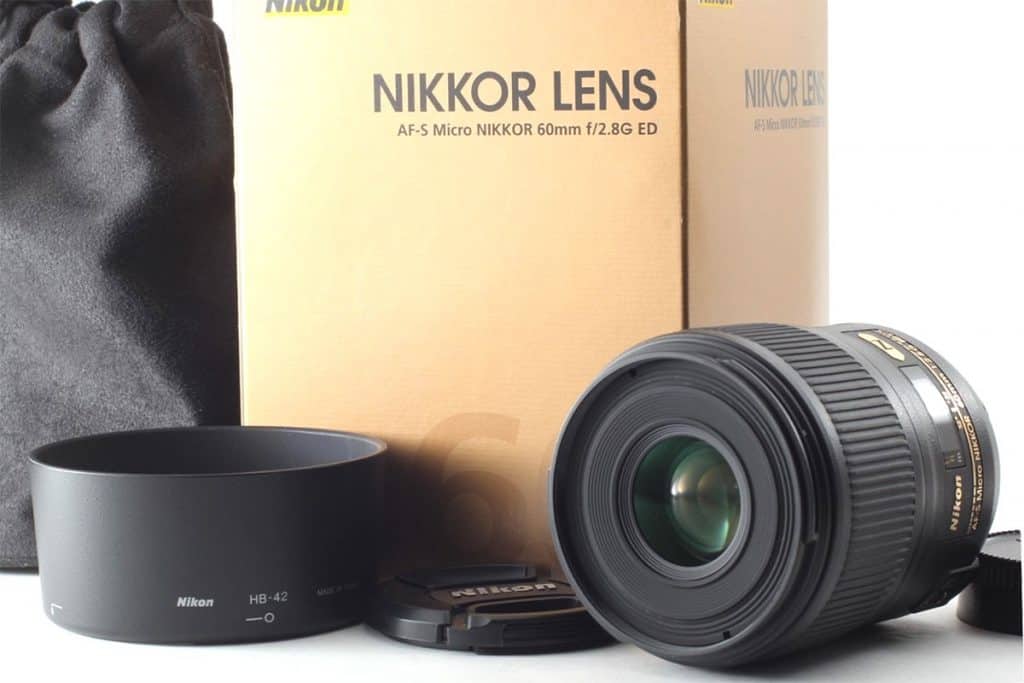
The AF-S version is significantly bigger than the older AF-D, but it also comes with much better autofocus and the convenience of AF override; so you can easily change over to manual mode without the need to go flicking switches on the side of the barrel. A lens hood is included.
Nikon’s 200mm f/4D lens is a very serious bit of kit that comes at a price to match.
For anyone in need of a relatively long telephoto macro lens though, there’s little that comes close in terms of quality.
Made in Japan entirely from metal and glass, the 200mm Micro-Nikkor is very heavy.
Its barrel features the usual array of physical controls that you’d expect from a top-end Nikon lens; such as an AF-MF select ring, a focus-limiter switch, and a DoF scale.
Pros
- Extremely sharp
- Very sturdily built
Cons
- Expensive
- Not weather sealed
- No image stabilization
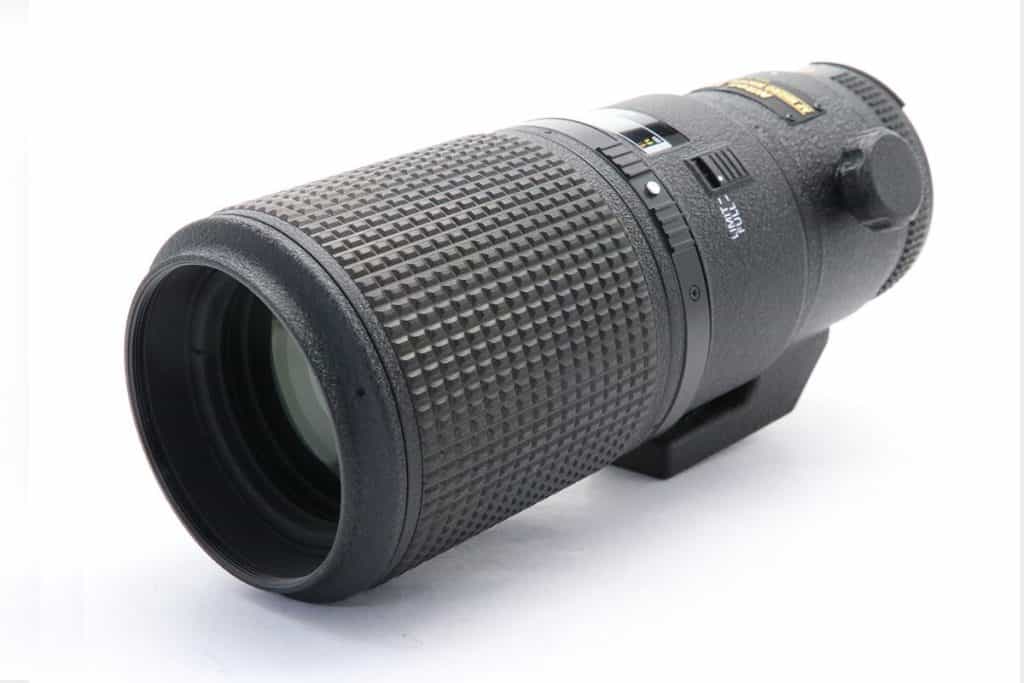
There’s also a physical aperture ring that goes to f/32, and meanwhile manual focus is genuinely a joy to use.
Most importantly though, the lens simply produces incredible images that are super sharp and display great color rendition.
Despite the high retail price, there’s no lens hood included in the box.
If you want one – and you probably will with a lens of this focal length – you must purchase it separately. However the lens does at least come with a tripod collar; in fact you’re stuck with a tripod collar whether you want it or not, as it can’t be removed.
What to Look for in a Macro Lens?
Magnification and Closest Focus Distance
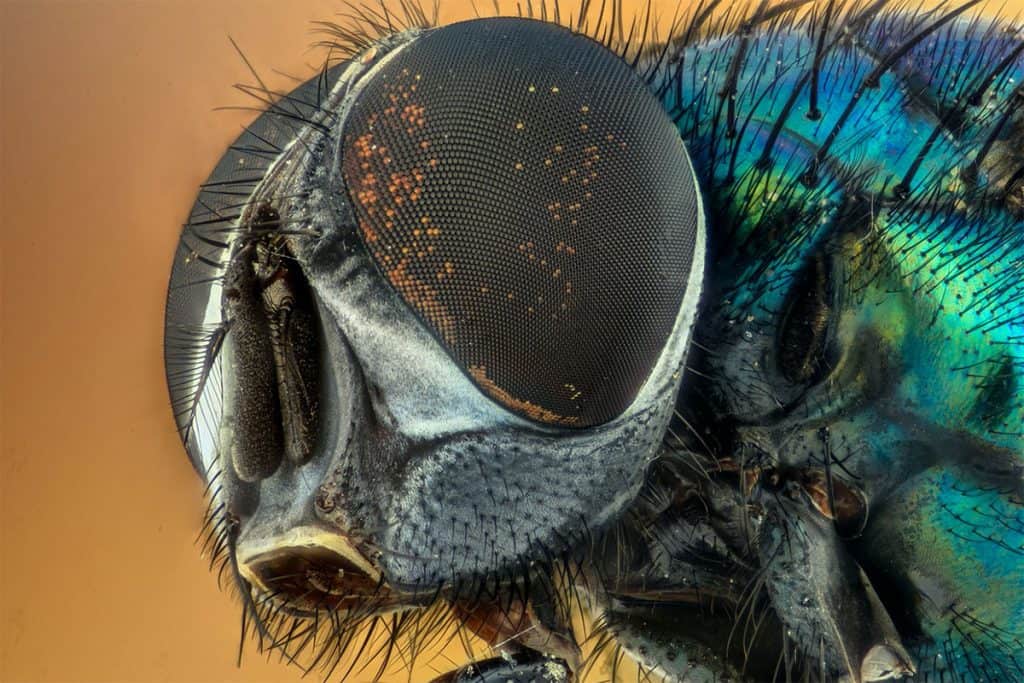
In order for a lens to qualify as truly macro, technically it should offer at least a ratio of 1:1 magnification and a minimum focusing distance of around 12 inches.
In other words, the ability to reproduce scenes at life-size dimensions.
However, in common usage, many lenses offering a lesser degree of magnification than this are often also referred to as macro. S
o if a genuine 1:1 scale of reproduction is important to you, be sure to check the technical specifications of any lens that you are considering purchasing.
Just bear in mind that closest focusing distance refers to the distance from the sensor to the subject, not from the front of the lens to the subject.
Image Quality
As macro photography is all about capturing details that can’t easily be seen with the naked eye, it should be obvious that image sharpness is of maximum importance when selecting a macro lens.
Typically a lens will perform best in this area when the diaphragm is shut down two or three stops from maximum aperture.
For example, many of the lenses we look at in this guide have a maximum aperture of f/2.8, so we might expect them to perform best from around f/4 onwards.
However, some truly excellent lenses will still deliver incredible sharpness even when used wide open.
While depth-of-field of course becomes deeper at smaller apertures such as f/22 or f/32, bear in mind that, with most lenses, sharpness tends to deteriorate again once you stop it down beyond about f/16.
It’s also important to differentiate between the sharpness of a lens at its center vs the edges. Few, if any, lenses perform as well at the corners as they do in the center – at least when used at wider apertures. Meaning that with almost any lens you can expect there to be a degree of difference in sharpness between the center and periphery.
However, if a lens that is otherwise excellent overall performs less well on sharpness at the edges, it’s worth considering that most of the time you will likely frame your photos so that the subject is placed somewhere towards the center of the image anyway.
So depending on the type of subjects you plan to photograph, corner sharpness may not in fact be all that important to you.
While it’s always best to avoid lenses that display overly strong optical aberrations such as barrel distortion or purple fringing, keep in mind that most optical or chromatic defects of this kind can easily be corrected at the digital editing stage.
Bokeh
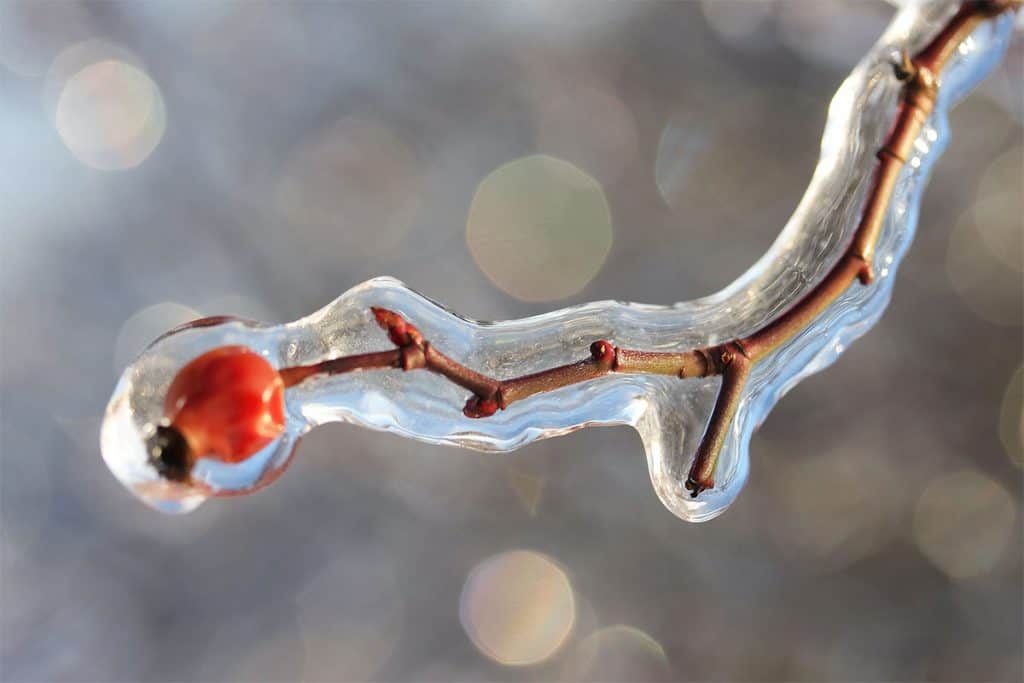
Bokeh refers to the quality of out of focus areas of a photograph, with some lenses rendering these areas in a smooth and attractive manner, and others doing so in a way that is visually much busier – and thus often quite distracting or even ugly.
While the only fool-proof way of knowing whether a particular model of lens produces pleasing bokeh or not is to try the lens out, generally lenses with more diaphragm blades, and ones that are rounded, will tend to produce nicer looking bokeh than those that use just a few angular diaphragm blades.
As a general rule, nine aperture blades will likely produce good results.
However, this isn’t always the case, so be sure to check actual images to judge whether you like the bokeh.
Beyond Macro
Pretty much any macro lens can be focused as far as infinity, and thus used for many other purposes beyond merely macro photography.
So when choosing a macro lens, it always makes sense to consider how useful the lens will likely be for any other styles of photography you may also be interested in shooting.
Focus
Macro photography usually results in images with an extremely narrow depth-of-field.
Because of this, focusing a macro lens often requires making minuscule adjustments in order to be certain that focus is set to exactly the point you want it.
For this reason, manual focusing is often preferable to using autofocus.
This being the case, you might want to consider whether fast autofocus is really such an important feature for your macro photography.
However, should you plan on using your macro lens for other uses beyond purely macro photography – portraits for example – it may be that fast and accurate autofocus remain a priority for you.
If you do feel that you need a macro lens with good autofocus capabilities, be sure to choose a lens that comes with a focus limiter switch – allowing you to restrict focus to a limited region – as this will massively help to reduce focus “hunting”.
And if you also plan to use the lens for shooting video, be sure to look for one that focuses silently. .
As you will likely shoot most of your macro photography using manual focus, be certain to choose a lens that provides satisfying manual focus action.
Check that the focus ring is comfortably grippable; nicely dampened; is easy to make small adjustments with; and, rather than turning endlessly, features hard focus stops.
Image Stabilization
Given that magnification amplifies movement, it can come as a surprise to discover that not all macro lenses feature image stabilization.
This is a shame, as vibration reduction can make an enormous difference to your ability to use the lens handheld; particularly when shooting in low light.
Of course, if you largely plan on photographing totally static subjects, using a tripod, it wouldn’t make much sense to pay out an extra premium for a lens with image stabilization.
For anyone who plans on photographing close-ups of nature in the great outdoors though, image stabilization will probably be essential.
Weather Sealing
Consider where will you be using the lens; in a studio or deep in the rainforest?
Weather sealing usually comes only on more expensive lenses, and for a photographer who just plans on shooting still-life images in a studio, a waterproof lens would likely be overkill.
But for anyone who expects to make the lens earn its keep out in the elements, paying a little extra for a weather-sealed lens would likely prove to be prudent.
Build
Similarly, there can be considerable variation in build-quality between lenses, with some featuring a barrel cast entirely from metal, and others made only out of plastic.
Having said this, even plastic lenses can differ greatly in their construction quality and ability to withstand hard usage; so don’t rule out a particular lens purely because it’s not made from metal.
Instead look at the overall construction and feel.
Which Focal Length of Macro Lens is Right for You?
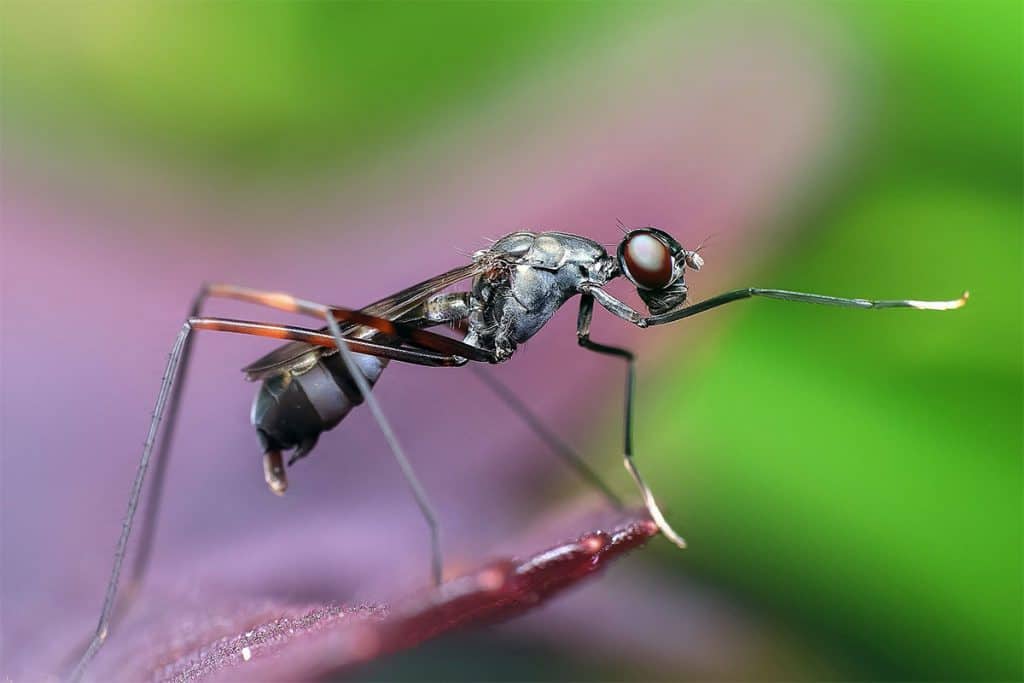
Although the classic macro lenses that are used for everything from nature photography to copying documents tend to have a focal length of between 90 and 105mm, macro lenses actually come in a variety of different focal lengths.
Indeed, our guide includes a couple that are considerably shorter than this, and one that’s quite a bit longer.
Which focal length will be right for you?
How you answer this question will to some degree depend on the kind of subjects you plan on shooting in macro mode.
Bugs and other small wildlife will usually work best at around 90-105mm.
As will jewelry and similar products. And 90mm is undoubtedly also great for head-and-shoulders portraits.
However, for portraits including a little more background, or food photography and certain other kinds of product shot, a shorter focal length such as 60mm might actually prove much better.
But what about something longer, like a 200mm lens?
Why would you need a macro lens in this focal length?
Surely a 90mm lens will let you get plenty close enough to shoot small wildlife, with the subject filling the frame?
Indeed it will, but in order to do this you’ll likely need to be right up on top of the little critters.
Thankfully the minimum focus distance of most macro lenses is sufficiently close to permit this.
But it’s worth considering that you may not always want to do this.
By getting so close to a living creature you risk scaring it off.
So there’s a lot to be said for being able to get the same degree of magnification without having to move so close to the subject that it flies away in fear before you get the shot.
Admittedly, there are probably plenty of bugs for whom a camera-wielding human is actually of little concern, so they’ll happily keep on doing their thing while you snap away.
But the other thing to consider here is that, by being right up next to your subject, you risk blocking your own light source; casting a shadow with your lens.
The extra reach provided by a longer telephoto macro lens will leave enough space between yourself and the subject for light to get in.
Nikon or Third Party?
Until quite recently it was still true that third-party lenses tended to be lower quality alternatives to those from the major brands; cheaper, but not really able to compete on quality.
Clearly this is no longer the case though; as demonstrated by the fact that this list of the best Macro lenses for Nikon FX cameras is currently topped by not just one, but two, third-party offerings.
While there’s no doubt that Nikon produces excellent quality lenses, in large part people go for Nikon products over those of their competitors for peace of mind.
But as we’ve seen above, when it comes to macro lenses, Nikon’s products are no longer secure in their position.
Indeed, not only is the lens that takes our number one spot – Tamron’s 90mm – cheaper than anything comparable from Nikon, it’s also every bit as good as Nikon’s products. If not actually better.
FX Mount Cameras
While you can use an FX (Full Frame) lens on a DX (APS-C) body, it will introduce a 1.5X crop factor.
For example, a 50mm FX lens will have a 75mm field of view on a DX camera.
For reference, the following Nikon cameras are full frame, using the FX mount natively:
- Nikon D780: 2020 January 06
- Nikon Z6 and Nikon Z7: 2018 August 30
- Nikon D850: 2017 August 24
- Nikon D5: 2016 January 05
- Nikon D750: 2014 September 12
- Nikon D810: 2014 June 26
- Nikon D4S: 2014 January 07
- Nikon Df: 2013 November 05
- Nikon D610: 2013 October 08
- Nikon D600: 2012 September 13
- Nikon D800 and Nikon D800E: 2012 February 07
- Nikon D4: 2012 January 06
- Nikon D3S: 2009 October 14
- Nikon D3X: 2008 December 01
- Nikon D700: 2008 July 01
- Nikon D3: 2007 August 23
Final Thoughts
As we’ve seen, today the best macro lenses for Nikon FX cameras are not necessarily those made by Nikon at all.
Not that you shouldn’t purchase a Nikon product if it meets your requirements; apart from anything else not all focal lengths or features are currently provided by competitor brands.
Nonetheless, for those looking to save money without compromising on quality, the Nikon FX macro lens market is looking very healthy right now, and third-party lenses play a big part in this.
So no matter what your budget or photographic needs, there’s likely to be a suitable macro lens out there for you.
What have your experiences been with Nikon FX macro lenses?
Do you prefer to play it safe and stick to Nikon’s own-brand macro lenses, or have you opted for alternative products from Tamron, Samyang, or Tokina and never looked back?
I’d love to hear your opinions in the comments section below.

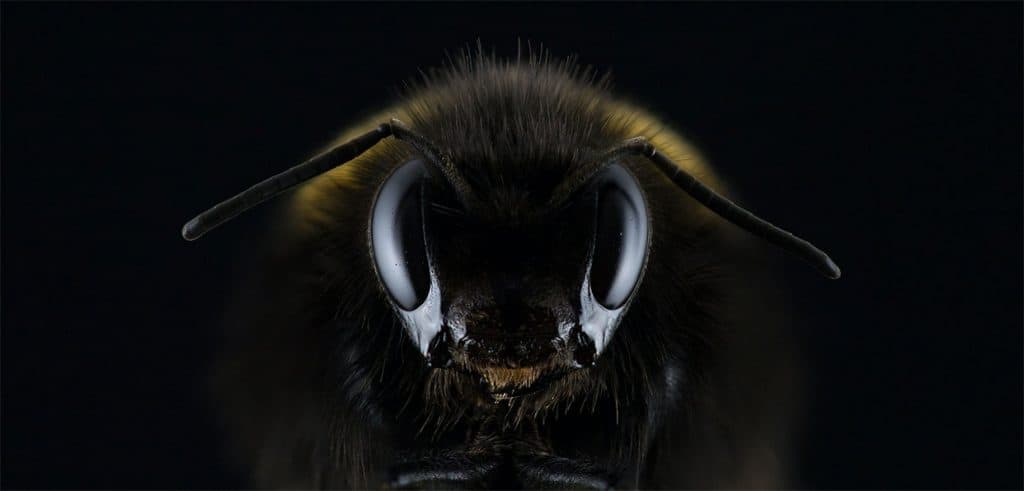
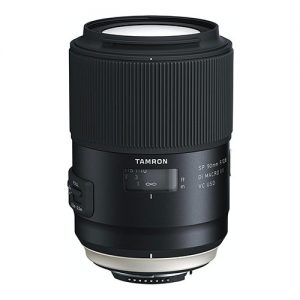
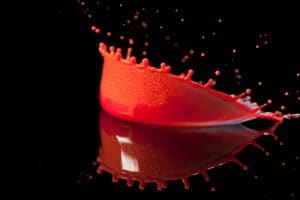

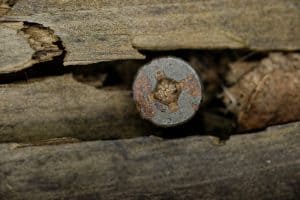
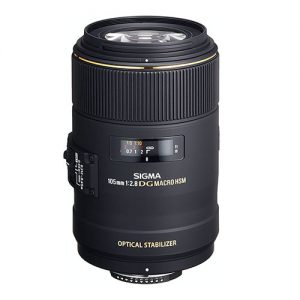
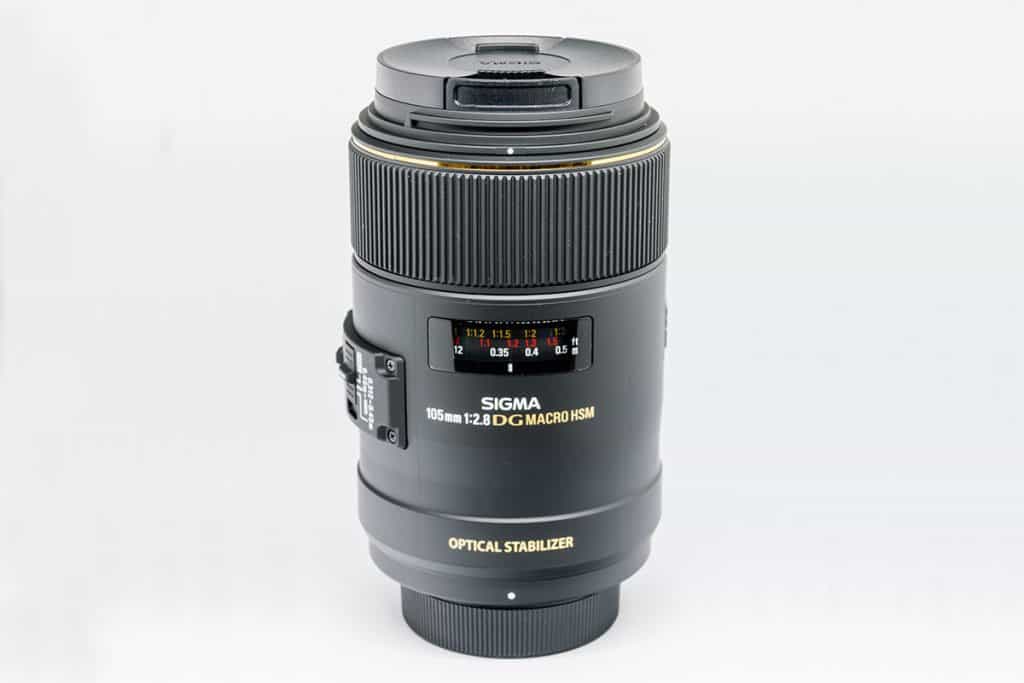
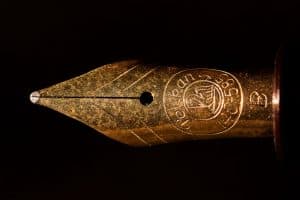
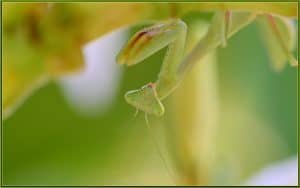
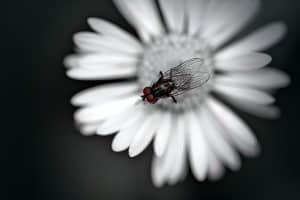
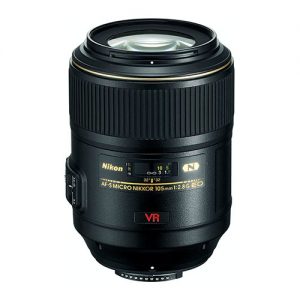
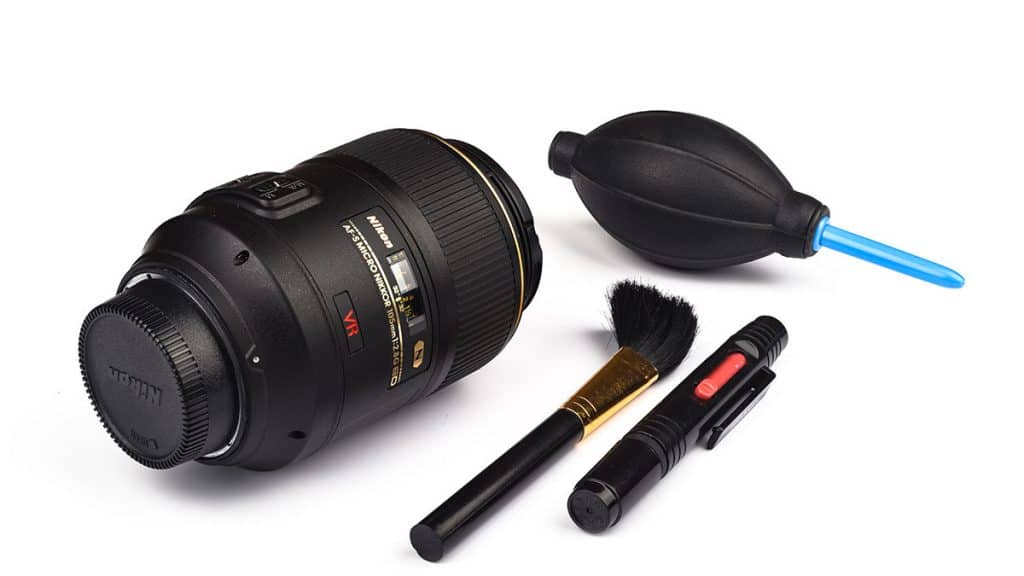
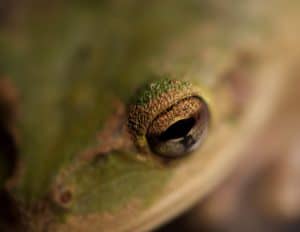
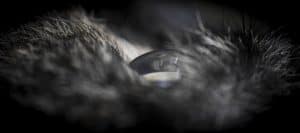

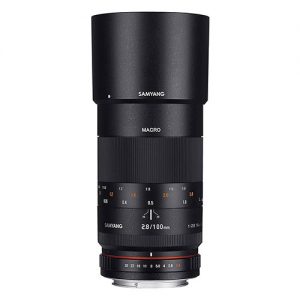
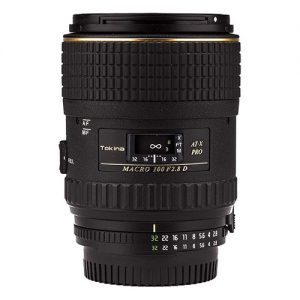


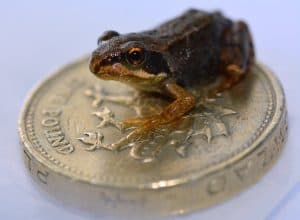

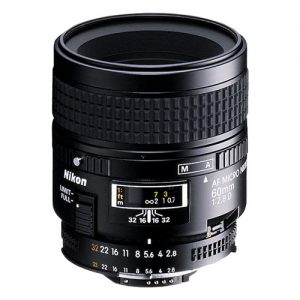
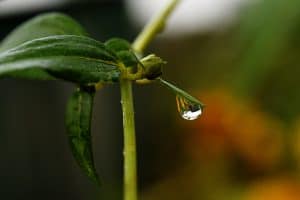
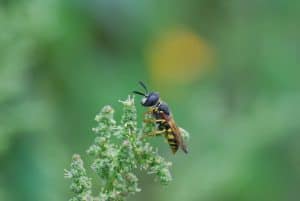

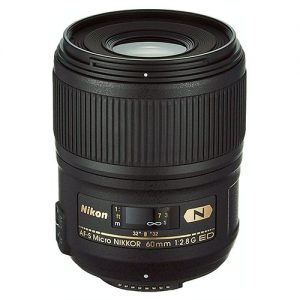
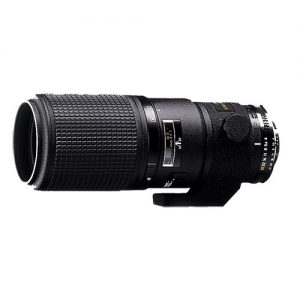



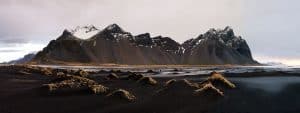

2 thoughts on “Top 8 Best Macro Lenses for Nikon FX (Full Frame)”
Good review. My experience as a serious hobbyist is also Tamron 90 f/2.8 Di VC USD to be a great one for macro. Thank you.
Yes, the problem i’m having is when you put a DX macro lens on my FX D750 camera and then try and work in the crop view in the viewfinder, its not easy to frame the shot visually. I dont really know what i’m going to get until i get into lightroom.
The wider view of the full frame camera also doesnt seem to give as sharp a focus of what i’m taking a shot of, with the final shot in lightroom often being disappointing.
I’m wondering if nikon do a full frame macro lens . It seems all the available lenses are DX . I cant find one that is specifically made for FX ?
Ihave a nikon 105 mm AF D lens, a 60mm nikon macro and a Tokina 100mm that are all dated pre FX.
They all work but with the same problem. Its difficult to frame the shot, and hard to see if the area you are wanting to be shown is being captured properly, or in focus.
Yeah, is there any FX macro on the market . When i go looking for one , all the lenses referenced seem to be DX and the understanding seems to be to use them on the FX body ?